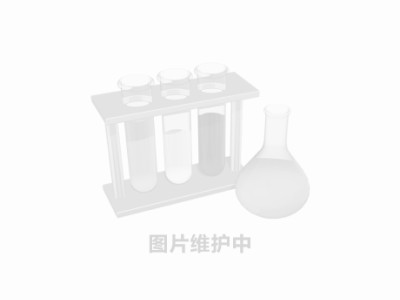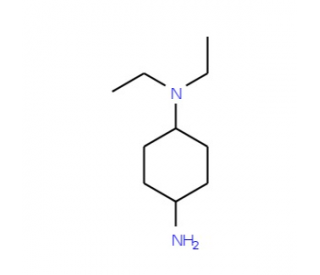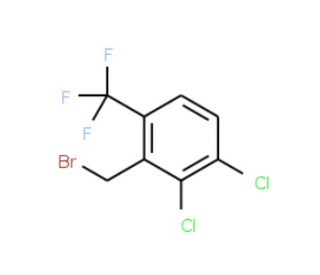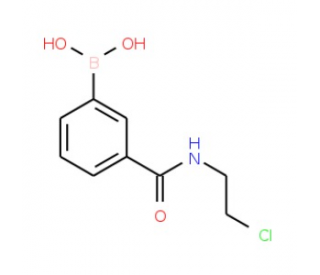詳細(xì)說明
Purity
>95%, by SDS-PAGE under reducing conditions and visualized by silver stain
Endotoxin Level
<1.0 EU per 1 μg of the protein by the LAL method.
Activity
Measured by its ability to mediate thrombin activation of protein C. The specific activity is >50 pmol/min/μg, as measured under the described conditions. See Activity Assay Protocol on www.RnDSystems.com
Source
Mouse myeloma cell line, NS0-derived Ala19-Ser515, with a C-terminal 6-His tag
Accession #
N-terminal Sequence
AnalysisAla19
Predicted Molecular Mass
53 kDa
SDS-PAGE
80-105 kDa, reducing conditions
3947-PA |
| |
Formulation Supplied as a 0.2 μm filtered solution in Tris and NaCl. | ||
Shipping The product is shipped with polar packs. Upon receipt, store it immediately at the temperature recommended below. | ||
Stability & Storage: Use a manual defrost freezer and avoid repeated freeze-thaw cycles.
|
Assay Procedure
Materials
Activation Buffer: TCNB (0.05 M Tris, 0.01 M CaCl2, 0.15 M NaCl, 0.05 % Brij-35, pH 7.5)
Assay Buffer: 0.05 M Tris, 0.1 M NaCl, 0.01% Brij-35, pH 8.5
Recombinant Human Coagulation Factor II/Thrombin (rhThrombin) (Catalog # )
Recombinant Human Thrombomodulin/BDCA?3 (rhTHBD) (Catalog # 3947-PA)
Recombinant Human Coagulation Factor XIV/Protein C (rhPROC) (Catalog # )
Recombinant Human Serpin C1/Antithrombin-III (rhSerpin C1) (Catalog # )
Heparin (Sigma-Aldrich, Catalog # H3393), 20 mg/mL in deionized water
Substrate: BOC-Val-Pro-Arg-AMC (Catalog # ES011)
F16 Black Maxisorp Plate (Nunc, Catalog # 475515)
Fluorescent Plate Reader (Model: SpectraMax Gemini EM by Molecular Devices) or equivalent
Dilute rhThrombin to 4 μg/mL in Activation Buffer.
Dilute rhTHBD to 4 μg/mL in Activation Buffer.
Dilute rhPROC to 40 μg/mL in Activation Buffer.
Combine 25 μL of the diluted rhPROC, 12.5 μL of the diluted rhThrombin, and 12.5 μL of the diluted rhTHBD in a microfuge tube. Incubate for one hour at 37 °C to activate rhPROC. As a control combine 25 μL of the diluted rhPROC, 12.5 μL of the diluted rhThrombin, and 12.5 μL of Activation Buffer in a microfuge tube.
Dilute rhSerpin C1 to 20 μg/mL with 32.4 μg/mL heparin in Activation Buffer.
Add and mix 50 μL of the diluted rhSerpin C1/heparin solution to the reaction vials.
Incubate at room temperature for 30 minutes to stop rhThrombin activity.
Dilute the reaction mixture 1:5 in Assay Buffer.
Dilute Substrate to 200 μM in Assay Buffer.
Load in a black well plate 50 μL of 2 μg/mL of rhPROC (100 ng/well), and start the reaction by adding 50 μL of 200 μM Substrate.
Read (top read) immediately in kinetic mode for 5 minutes at excitation and emission wavelengths of 380 nm and 460 nm, respectively.
Calculate specific activity:
Specific Activity (pmol/min/μg) = | Adjusted Vmax* (RFU/min) x Conversion Factor** (pmol/RFU) |
| amount of enzyme (μg) |
*Adjusted for control containing no rhTHBD
**Derived using calibration standard 7-Amino, 4-Methyl Coumarin (Sigma-Aldrich, Catalog # A9891).
Per Well:
rhPROC: 0.1 μg
rhTHBD: 5 ng
Substrate: 100 μM
Background: Thrombomodulin/BDCA-3
Encoded by the THBD gene, Thrombomodulin is also known as CD141 antigen and blood dendritic cell antigen 3 (BDCA-3). The deduced amino acid (aa) sequence of human THBD (Accession # P07204) predicts a signal peptide (aa 1-18) and a mature chain (aa 19?575) that consists of following domains: C?type lectin (aa 31-169), EGF-like (aa 241-281, aa 284-324, aa 325-363, aa 365?405, aa 404?440, and aa 441?481), transmembrane (aa 516 to 539) and cytoplasmic (aa 540?575). The R&D Systems recombinant human THBD consists of aa 19-515, corresponding to the extracellular portion of the type I membrane protein. Predominantly synthesized by vascular endothelial cells, THBD inhibits coagulation and fibrinolysis (1?3). It functions as a cell surface receptor and an essential cofactor for active thrombin, which in turn activates protein C and thrombin-activatable fibrinolysis inhibitor (TAFI), also known as carboxypeptidase B2 (CPB2). Activated protein C (APC), facilitated by protein S, degrades coagulation factors Va and VIIIa, which are required for thrombin activation. Activated CPB2 cleaves basic C?terminal aa residues of its substrates, including fibrin, preventing the conversion of plasminogen to plasmin. In addition, THBD gene polymorphisims are associated with human disease and THBD plays a role in thrombosis, stroke, arteriosclerosis, and cancer (4). For example, increased serum levels of THBD, due to protease cleavage, have been associated with smoking, cardiac surgery, atherosclerosis, liver cirrhosis, diabetes mellitus, cerebral and myocardial infarction, and multiple sclerosis (5).
References:
Van de Wouwer, M. et al. (2004) Arterioscler. Thromb. Vasc. 24:1374.
Wu, K.K. et al. (2000) Ann. Med. 32:73.
Li, Y.H. et al. (2006) Cardiovasc. Hematol. Agents Med. Chem. 4:183.
Weiler, H. and B.H. Isermann (2003) J. Thromb. Haemost. 1:1515.
Califano, F. et al. (2000) Eur. Rev. Med. Pharmacol. Sci. 4:59.
Entrez Gene IDs:
7056 (Human); 21824 (Mouse); 83580 (Rat)
Alternate Names:
BDCA3; BDCA-3; CD141 antigen; CD141; Fetomodulin; THBD; THRM; Thrombomodulin; TM










 粵公網(wǎng)安備44196802000105號(hào)
粵公網(wǎng)安備44196802000105號(hào)